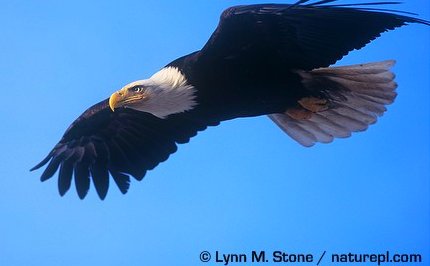Biodiversity VS Monoculture Genetic diversity is a part of biodiversity in that it leads to speciation. Gene variation, or polymorphism, allows populations to adapt to their environment, based on natural selection. The trick is that if a beneficial mutation occurs in an individual's genes, then it will be more adapted to its environment and so it will likely survive to reproduce. Over time, the descendants of the mutated animal may become a new species. Genetic diversity also gives populations resiliency to disease, for certain individuals with specific genes are immune to pathogens that other individuals may not be. (1) | |
Humans have practiced agriculture, or the raising of plants and animals for food, for thousands of years. Long ago, farmers discovered that selectively choosing individuals to breed could yield desired traits in the offspring. This has led to the domestication of species and the practice of monoculture. (1)
Monoculture is the raising of crops and livestock to make an entire breed or population have individually identical genes.
Monoculture is very productive and efficient because it can yield a huge supply of a single crop, such as corn (right) or soybeans (below). ( | However, monoculture can be a very bad thing. If a disease is contracted by one individual in a population of genetically-identical individuals, then the whole population could be wiped out. (1)
In addition, planting the same species in the same area for thousands of acres for multiple generations quickly depletes the soil nutrients. The single monocultural crop only requires certain nutrients from the soil, so each generation uses up those particular nutrients and wastes the rest that it doesn't need. This exhausts the soil very quickly and raises the need to clear more natural habitat for agriculture. (9) |
Monoculture makes crops very susceptible to disease, for every individual has the same genes. Thus chemicals, insecticides, and herbicides have to be used to prevent these diseases. In fact, "investment of about 40 billion dollars in pesticide control is incurred yearly by US farmers, which is estimated to save approximately $16 billion in US crops." (9) However, pesticides are incredibly harmful to wildlife, the environment, and even humans. The cost of these negative impacts is about $8 billion each year. (9) DDT
In the 1950s, a pesticide called DDT was widely used as a pesticide to control insects that were damaging crops. In Michigan, scientists observed that the DDT that was designed to target beetles carrying Dutch Elm Disease also accumulated in the bodies of earthworms on the ground. The birds that ate these earthworms died from the DDT poisoning. (10) It turned out that the 20th century saw the drastic decline of birds like bald eagles, Eurasian sparrowhawks, and peregrine falcons due to DDT. (11) The chemical doesn't affect the birds directly, but instead it gets stored in their bodies after eating contaminated animals. The DDT then alters the birds' calcium metabolism and leads to eggshell thinning. This is when the birds' eggs are laid with very thin and brittle shells which are inadvertently crushed by the nesting parent. Due to the severe endangerment of eagles and falcons, DDT was almost entirely banned in the United States in 1972. (10)  The Bald Eagle (Haliaeetus leucocephalus) was removed from the federal endangered species list in 2007. | DDT thins bird egg shells. These contaminated eggs of a Peregrine Falcon (Falco peregrinus) were crushed by their mother. |
What's our alternative?
Polyculture is a better alternative to monoculture because it creates an artificial ecosystem in which multiple species of crops are grown in the same field.
Because each species uses different nutrients in the soil in different ways, the soil is used to its full potential, as opposed to monoculture where one single species exhausts the soil while using only some of the nutrients the soil is capable of providing. (12) Other ways of sustainable agriculture include recycling nutrients and water, and by including livestock to provide natural fertilizer and to eat the discarded crop remnants. (1) Palm Oil
Palm oil plantations are an example of monoculture. Palm oil is used in many foods and fuels. They are usually have very negative effects on the environment, for biologically diverse tropical rainforest is cleared to make way for the thousands of acres of identical trees. However, some palm oil plantations have started implementing ecologically beneficial methods such as planting multiple species of trees. Hopefully in the future, palm oils will all become both beneficial to humans and sustainable for the environment. (13) | |
|





